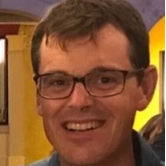Digital Audio Effects
A special issue of Applied Sciences (ISSN 2076-3417). This special issue belongs to the section "Acoustics and Vibrations".
Deadline for manuscript submissions: closed (15 December 2019) | Viewed by 94483
Special Issue Editors
Interests: acoustic signal processing; audio signal processing; audio systems; music technology
Special Issues, Collections and Topics in MDPI journals
Special Issue Information
Dear colleagues,
Digital audio effect applications are pervasive in many fields, from musical signal analysis and synthesis to music production, and from acoustics to machine listening. Innovations in this area are increasingly specialised and advanced, and can be rooted in several technical, artistic and psychological disciplines.
In this Special Issue we welcome both original research papers and review articles on diverse topics such as:
- Capture and analysis of audio and music
- Representation, transformation and modelling of audio signals
- Transmission and resynthesis of audio
- Effects and manipulation of musical sound
- Perception, psychoacoustics and evaluation
- Spatial sound analysis, coding and synthesis
- Audio source separation
- Physical, virtual acoustic and analogue modelling
- Sound synthesis, composition and sonification
- Hardware and software design for digital audio effects
Submissions will be judged on their academic quality, novelty, and relevance to the topic of digital audio effects, through peer review.
Additionally, authors of excellent contributions to relevant conferences such as the 22nd International Conference on Digital Audio Effects (DAFx-19) in Birmingham, UK, will be invited to submit an extended version of their paper to this Special Issue.
Prof. Dr. Vesa Välimäki
Assoc. Prof. Federico Fontana
Guest Editors
Manuscript Submission Information
Manuscripts should be submitted online at www.mdpi.com by registering and logging in to this website. Once you are registered, click here to go to the submission form. Manuscripts can be submitted until the deadline. All submissions that pass pre-check are peer-reviewed. Accepted papers will be published continuously in the journal (as soon as accepted) and will be listed together on the special issue website. Research articles, review articles as well as short communications are invited. For planned papers, a title and short abstract (about 100 words) can be sent to the Editorial Office for announcement on this website.
Submitted manuscripts should not have been published previously, nor be under consideration for publication elsewhere (except conference proceedings papers). All manuscripts are thoroughly refereed through a single-blind peer-review process. A guide for authors and other relevant information for submission of manuscripts is available on the Instructions for Authors page. Applied Sciences is an international peer-reviewed open access semimonthly journal published by MDPI.
Please visit the Instructions for Authors page before submitting a manuscript. The Article Processing Charge (APC) for publication in this open access journal is 2400 CHF (Swiss Francs). Submitted papers should be well formatted and use good English. Authors may use MDPI's English editing service prior to publication or during author revisions.






